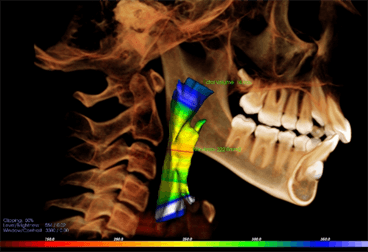Corrective Jaw Surgery
Corrective jaw surgery moves your teeth and jaws into positions that are more balanced, functional, and healthy. Whether your needs include improving your bite and function, appearance, or speech, corrective jaw surgery can have a dramatic and positive effect on your outlook on life. We are here to work together with you to help you achieve a beautiful, functional, pain-free smile that will last for the rest of your life.
Who needs corrective jaw surgery?
In some cases, your upper and lower jaws may have grown at different rates. Injuries and birth defects may also affect jaw alignment. While orthodontics can usually correct problems when only the teeth are misaligned, corrective jaw surgery may be necessary to correct misalignment of the jaws. If you suffer from any of the following conditions, you may be an excellent candidate for corrective jaw surgery:
- Difficulty chewing, biting food, or swallowing
- Chronic jaw or jaw joint (TMJ) pain and headache
- Excessive wear of the teeth
- Open bite (space between the upper and lower teeth when the mouth is closed)
- Unbalanced facial appearance from the front or side
- Facial injury or birth defects
- Receding chin
- Protruding jaw
- Inability to make the lips meet without straining
- Chronic mouth breathing and dry mouth
- Sleep apnea (breathing problems when sleeping, including snoring)
Receiving treatment to correct any of the above conditions is a commitment, not only to your health, but to your happiness as well. While treatment, which may include surgery and orthodontic treatment, may take several years to complete, the results will last a lifetime. There is no reason to live with painful, uncomfortable jaw conditions. You can feel confident that you are receiving incredible care during jaw surgery. This type of surgery can usually be performed entirely inside of your mouth, which leaves no facial scars. Your surgeon will make cuts in the jawbones and move them into the correct position. Once your jaws are properly aligned, screws and bone plates will be used to secure the bones into their new position. In some cases, extra bone may be added to your jaw.
In most cases, your orthodontist will place braces on your teeth before surgery to level and align your teeth. After your jaw heals from surgery – which will usually take three to six weeks – your orthodontist will finish aligning your teeth and eventually remove the braces. The entire orthodontic process may take 12 to 24 months.
Types of Jaw Surgery
Depending on your situation, you may have jaw surgery performed on the upper jaw, lower jaw, or both. We can explain the differences in more detail below:
Upper Jaw (Maxillary Osteotomy):
A maxillary osteotomy may be performed to correct the following issues:
- Significantly receded upper jaw
- Crossbite
- Too much or too little of the teeth showing
- Open bite
All happening inside of your mouth, your surgeon will cut the bone above your teeth (below both eye sockets) so that the entire top jaw – including the roof of your mouth and your upper teeth – will be able to move as one unit. The jaw and upper teeth will be moved forward until they fit properly with the lower teeth.
Once the jaw is realigned, tiny screws and plates will hold the bone in its new position. These screws – which are smaller than a bracket used for braces – will become integrated into the bone structure over time.
An open bite occurs when excess bone grows above the molars, causing what is normally a flat and even surface to become angled. When you bite down, your molars touch but your front teeth don’t touch each other, making chewing difficult. To fix this, your surgeon will shave away or remove the excess bone.
Lower Jaw (Mandibular Osteotomy):
A significantly receded lower jaw can be corrected by a procedure called mandibular osteotomy. In this procedure, the surgeon will make a cut behind the molars as well as lengthwise down the jawbone so the front of the jaw can move as one unit. As a result, the jaw will slide smoothly into its new position. Screws will hold the jawbone together until it heals.


